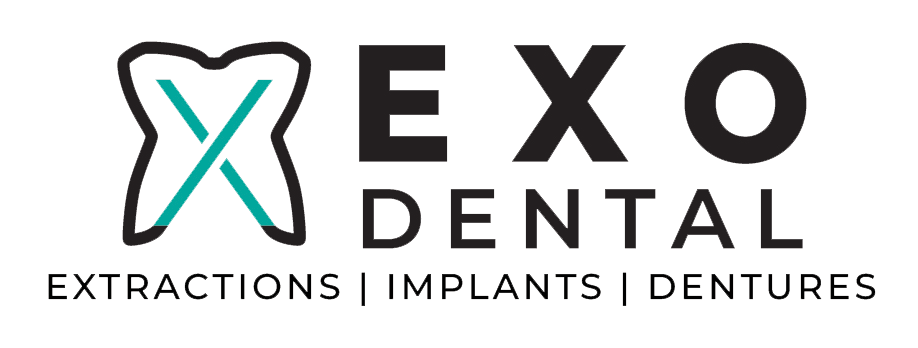Sedation for Tooth Extractions: A Complete Guide
Dental extractions can be daunting for many patients due to the fear of pain and discomfort. At our clinic, we strive to make every dental procedure as stress-free and comfortable as possible, which is why we emphasize the importance of effective sedation techniques. Sedation dentistry plays a crucial role in managing anxiety and pain during tooth extractions, ensuring that your experience is as calm and painless as possible.
Understanding the role of sedation in tooth extractions is essential not only for alleviating fears but also for preparing you for what to expect from the procedure. We use a variety of sedation types, tailored to meet individual needs and health profiles, to facilitate a smooth and anxiety-free extraction experience. This approach helps us cater to the diverse needs of our patients, making dental care accessible and bearable for those who might otherwise avoid crucial treatments due to fear of discomfort.
Each patient's procedure journey, from the initial consultation through the recovery phase, is designed with utmost care and precision. By integrating advanced sedation options, we ensure that you remain comfortable and informed throughout your treatment. This introductory guide will further explore the types of sedation used, what happens before, during, and after an extraction with sedation, and addresses common questions regarding sedation and tooth extractions. Our commitment is to provide you with a safe, comfortable environment where your dental health can be taken care of without undue stress.
Understanding the Role of Sedation in Tooth Extractions
Sedation plays a pivotal role in the field of dentistry, especially during procedures like tooth extractions, where patient anxiety and pain management are of utmost concern. At our dental practice, we consider sedation not just a tool for comfort, but a critical component of the treatment, ensuring that the procedure is as painless and stress-free as possible. Sedation allows for a more relaxed environment for both the patient and the dental surgeon, facilitating an easier and quicker procedure.
From a medical standpoint, the use of sedation helps to suppress the gag reflex, decrease saliva flow, and help patients to remain still, which enhances the preciseness of the extraction. For patients, the primary benefits include reduced anxiety before and during the procedure, minimal discomfort, and often little memory of the procedure itself. This approach is particularly important for patients who experience dental phobia or have had negative experiences in the past. By mitigating these physical and psychological barriers, we ensure a more positive and less traumatic dental visit.
Types of Sedation Used for Tooth Extractions
To cater to the varied needs and medical histories of our patients, several types of sedation are available at our dental practice, each offering different levels of relaxation and consciousness. The choice of sedation often depends on the complexity of the extraction and the patient's level of anxiety. Here’s an overview of the types of sedation we commonly use for tooth extractions:
1. Nitrous Oxide: Often referred to as laughing gas, nitrous oxide is a mild sedative that is inhaled through a mask placed over the nose. It helps relax patients during the procedure without causing deep sedation. Recovery from nitrous oxide sedation is quick, allowing patients to drive themselves home following the extraction.
2. Oral Sedation: This involves taking a prescribed dose of sedative drug orally, usually an hour before the procedure. Oral sedation can range from minimal to moderate, depending on the dose. With moderate sedation, patients may feel groggy but can still respond to verbal cues.
3. Intravenous (IV) Sedation: Administered directly into the bloodstream, IV sedation works rapidly and its level can be adjusted during the procedure. It allows patients to enter a state of deep relaxation and they often have little to no memory of the procedure afterwards.
4. General Anesthesia: Used in more extensive cases, general anesthesia causes a temporary loss of consciousness. It is generally reserved for patients undergoing complex surgeries or for those who have significant dental anxiety.
By understanding and offering various sedation options, we personalize the extraction experience to meet the needs and preferences of our patients, ensuring their utmost comfort and safety during the procedure.
Step-by-Step Guide: What Happens Before, During, and After Sedation for an Extraction
Before any procedure, we prioritize understanding each patient's medical history and specific needs to determine the best sedation method. The process begins with a comprehensive consultation where we discuss your health background, any anxieties about dental procedures, and your previous experiences with sedation. This meeting helps us tailor the sedation plan to ensure your utmost comfort and safety.
On the day of the extraction, you’ll be asked to arrive early to prepare for sedation, which may include taking oral sedatives an hour before the procedure if that’s the chosen method. Our team will monitor your vital signs closely from the moment you enter our office until you are ready to leave. During the extraction, you'll be under constant supervision to ensure the sedative is working effectively and that you are at ease. Post-extraction, we oversee your recovery from sedation, providing guidelines on post-procedure care and pain management. This comprehensive approach ensures your experience is safe and free of any undue stress.
FAQs: Answering Your Top Questions About Sedation and Tooth Extractions
Many patients have important questions about using sedation for dental procedures. Here are some of the most common queries we address:
1. Is sedation safe for all dental patients?
Sedation is safe for most patients; however, individual health conditions and allergies can affect eligibility. This is why the pre-procedure consultation is crucial, as it allows us to assess your suitability for sedation.
2. How long does recovery take after sedation?
Recovery times can vary depending on the type of sedation used. For instance, patients who receive nitrous oxide typically recover quickly, often within minutes after the procedure. Oral sedatives and IV sedation may require a longer recovery period, and patients will need someone to drive them home.
3. Will I feel any pain during a tooth extraction with sedation?
One of the primary advantages of sedation is pain relief during dental procedures. While you may feel slight pressure during the extraction, the discomfort should be minimal.
As we respond to these questions, our goal is to make the process transparent and to ease any concerns you may have about sedation dentistry.
Closing Thoughts on Sedation Dentistry at Exo Dental
At our practice, we understand that the thought of a dental extraction can cause anxiety for many. This is why we are committed to making the experience as comfortable and painless as possible through effective sedation practices. Our skilled team is trained in a variety of sedation techniques, allowing us to provide personalized care that best suits each patient's needs. We believe that no one should have to forgo necessary dental care due to fear of pain, and our sedation options are designed to help alleviate those fears.
The journey to a healthier smile should be as pain-free and uncomplicated as possible. If you’re considering an extraction or any other dental procedure and have concerns about discomfort, please get in touch with us at Exo Dental. We're here to provide the care and support you need to make informed decisions about your dental health and help manage any dental anxiety you might experience. Schedule your consultation today with our
dentist in Rogers, AR, and let us help you achieve your best smile with the comfort and care you deserve.
Don't hesitate to contact Exo Dental in Rogers to discuss your tooth removal and oral surgery options. Hablamos Español.

